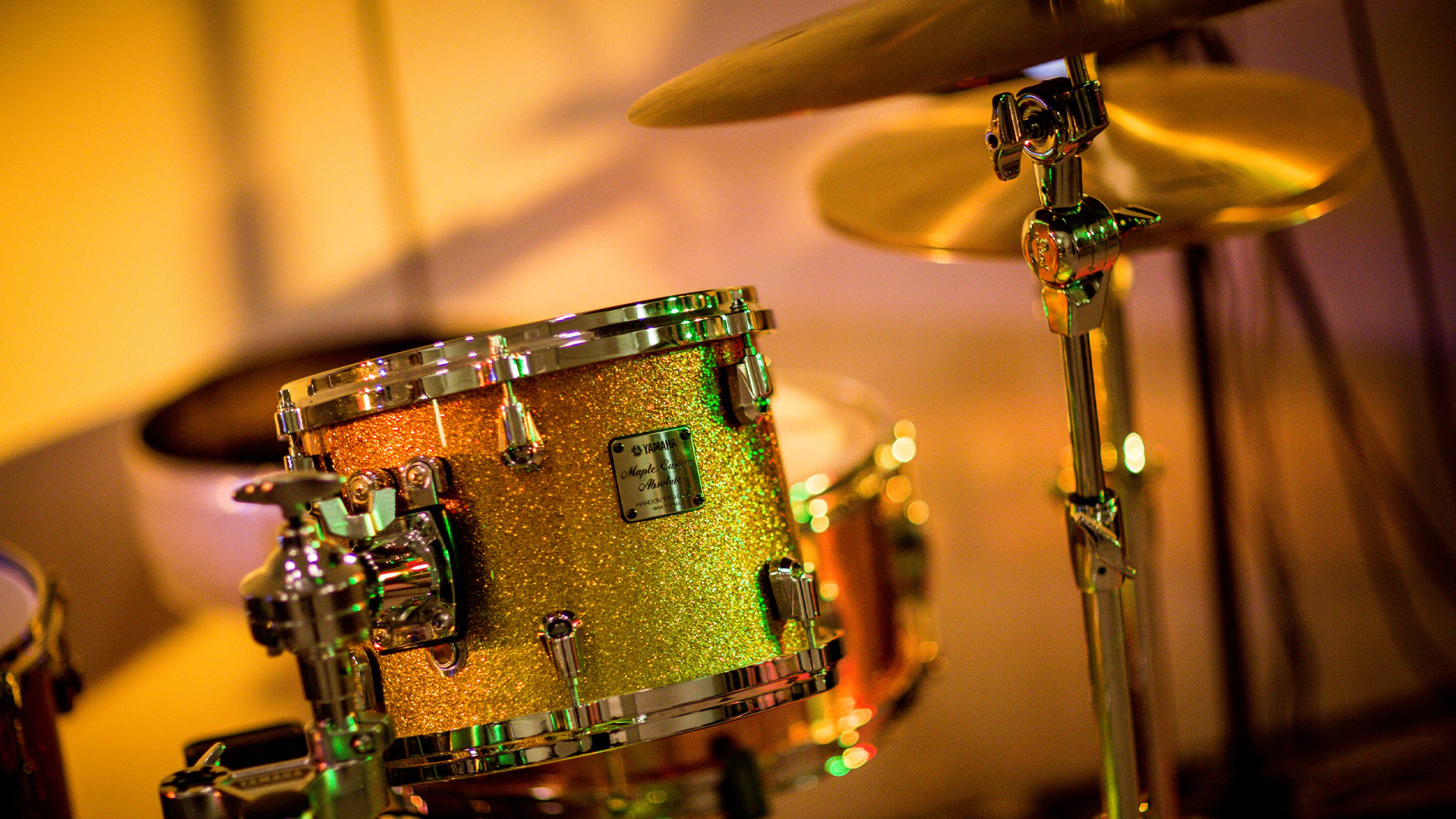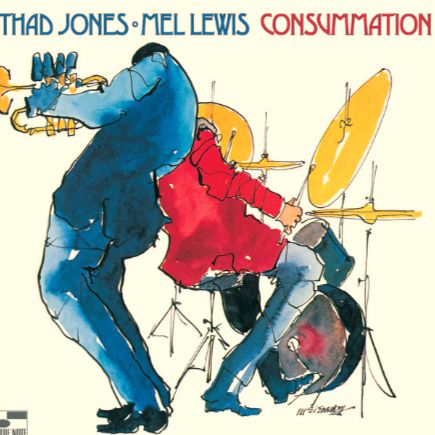Mel Lewis, le swing orchestral du jazz moderne
Batteur, chef d’orchestre et figure majeure du jazz américain, Mel Lewis incarne la rencontre entre l’énergie du big band et la finesse d’un jeu d’accompagnateur d’exception. Représentant emblématique du West Coast jazz, il s’est imposé comme l’un des artisans les plus respectés du jazz d’après-guerre, alliant maîtrise rythmique, écoute collective et sens rare du détail sonore.
Né à Buffalo (New York), fils d’un professeur de batterie, Mel Lewis découvre très tôt sa vocation. À quinze ans, il entame déjà une carrière professionnelle, affirmant un style souple et chantant qui fera sa marque. Sa notoriété croît rapidement lorsqu’il rejoint, entre 1954 et 1957, le big band de Stan Kenton. Cette période s’avère décisive: il participe à sa première tournée européenne et perfectionne un sens orchestral du tempo et des nuances qui deviendra sa signature. Parallèlement, il s’impose comme musicien de studio à Los Angeles, participant à de nombreux enregistrements caractéristiques du West Coast jazz, où se distinguent la précision rythmique et la clarté du son.
À la fin des années 1950, Lewis rejoint le trio du pianiste Hampton Hawes, avant de s’installer définitivement à New York en 1960. Dans la capitale du jazz moderne, il mène une carrière foisonnante de sideman recherché et de musicien de studio. Il joue au sein du Gerry Mulligan Concert Jazz Band, participe à une tournée européenne avec l’orchestre de Dizzy Gillespie, puis voyage en Union soviétique avec celui de Benny Goodman, représentant ainsi la vitalité du jazz américain sur la scène internationale.
Mais c’est en 1965 qu’il marque durablement l’histoire du big band moderne en cofondant, avec le trompettiste et arrangeur Thad Jones, le Thad Jones/Mel Lewis Orchestra. Pensé d’abord comme un orchestre ponctuel, ne jouant que quelques concerts par an, l’ensemble s’impose rapidement comme l’un des plus novateurs de son époque. Installé chaque lundi au Village Vanguard, le big band attire un public fidèle et devient un véritable laboratoire d’écriture orchestrale, alliant rigueur d’ensemble et liberté d’improvisation.
Après le départ de Thad Jones en 1979, Mel Lewis poursuit l’aventure sous le nom de Mel Lewis and the Jazz Orchestra, conservant l’esprit original du projet et son ancrage au Village Vanguard. Sous sa direction, l’orchestre devient un creuset de talents, réunissant des musiciens d’exception comme Bob Brookmeyer, Pepper Adams ou Dick Oatts.
Mel Lewis, el swing orquestal del jazz moderno
Baterista, director de orquesta y figura esencial del jazz estadounidense, Mel Lewis encarnó la unión entre la energía del big band y la sutileza de un acompañante excepcional. Representante emblemático del West Coast jazz, se consolidó como uno de los músicos más respetados del jazz de posguerra, combinando una maestría rítmica impecable, una escucha colectiva atenta y un sentido extraordinario del detalle sonoro.
Nacido en Buffalo (Nueva York) e hijo de un profesor de batería, Mel Lewis descubrió su vocación desde muy joven. A los quince años inició su carrera profesional, afirmando un estilo flexible y melódico que lo distinguiría para siempre. Su notoriedad aumentó rápidamente cuando, entre 1954 y 1957, se incorporó a la big band de Stan Kenton. Este período resultó decisivo: participó en su primera gira europea y perfeccionó un sentido orquestal del tempo y de las dinámicas que se convertiría en su sello personal. Paralelamente, se consolidó como músico de estudio en Los Ángeles, participando en numerosas grabaciones representativas del West Coast jazz, caracterizadas por la precisión rítmica y la claridad sonora.
A finales de los años cincuenta, Lewis se unió al trío del pianista Hampton Hawes antes de establecerse definitivamente en Nueva York en 1960. En la capital del jazz moderno desarrolló una intensa carrera como sideman solicitado y músico de estudio. Tocó en el Gerry Mulligan Concert Jazz Band, realizó una gira europea con la orquesta de Dizzy Gillespie y más tarde viajó a la Unión Soviética con la de Benny Goodman, representando la vitalidad del jazz estadounidense en el escenario internacional.
En 1965 marcó de manera duradera la historia del big band moderno al cofundar, junto al trompetista y arreglista Thad Jones, el Thad Jones/Mel Lewis Orchestra. Concebida inicialmente como una formación ocasional con pocos conciertos al año, la orquesta se convirtió rápidamente en una de las más innovadoras de su tiempo. Con su residencia semanal en el Village Vanguard, el conjunto atrajo a un público fiel y se transformó en un auténtico laboratorio de escritura orquestal, combinando la precisión del conjunto con la libertad de la improvisación.
Tras la partida de Thad Jones en 1979, Mel Lewis continuó el proyecto bajo el nombre Mel Lewis and the Jazz Orchestra, preservando el espíritu original y su vínculo con el Village Vanguard. Bajo su dirección, la orquesta se convirtió en un semillero de talentos, reuniendo a músicos excepcionales como Bob Brookmeyer, Pepper Adams y Dick Oatts.
Mel Lewis, lo swing orchestrale del jazz moderno
Batterista, direttore d’orchestra e figura centrale del jazz americano, Mel Lewis ha incarnato la sintesi tra l’energia del big band e la raffinatezza di un accompagnatore d’eccezione. Rappresentante emblematico del West Coast jazz, si è affermato come uno dei protagonisti più rispettati del jazz del dopoguerra, unendo padronanza ritmica, sensibilità collettiva e un raro senso del dettaglio sonoro.
Nato a Buffalo (New York) e figlio di un insegnante di batteria, Mel Lewis scoprì presto la propria vocazione musicale. A quindici anni intraprese la carriera professionale, affermando uno stile fluido e melodico che lo avrebbe reso riconoscibile tra tutti. La sua notorietà crebbe rapidamente quando, tra il 1954 e il 1957, entrò a far parte della big band di Stan Kenton. Questo periodo fu decisivo: partecipò al suo primo tour europeo e affinò un senso orchestrale del tempo e delle sfumature che sarebbe diventato la sua firma. Parallelamente, si impose come turnista negli studi di Los Angeles, prendendo parte a numerose incisioni rappresentative del West Coast jazz, caratterizzate da precisione ritmica e chiarezza del suono.
Alla fine degli anni Cinquanta, Lewis si unì al trio del pianista Hampton Hawes, per poi trasferirsi definitivamente a New York nel 1960. Nella capitale del jazz moderno condusse una carriera intensa come sideman richiesto e musicista di studio. Suonò nel Gerry Mulligan Concert Jazz Band, fece un tour europeo con l’orchestra di Dizzy Gillespie e successivamente si esibì in Unione Sovietica con quella di Benny Goodman, rappresentando la vitalità del jazz americano sulla scena internazionale.
Nel 1965 lasciò un segno indelebile nella storia del big band moderno fondando, insieme al trombettista e arrangiatore Thad Jones, la Thad Jones/Mel Lewis Orchestra. Pensata inizialmente come formazione saltuaria con pochi concerti l’anno, l’orchestra si affermò rapidamente come una delle più innovative del suo tempo. Con la sua residenza fissa del lunedì al Village Vanguard, divenne un vero laboratorio di scrittura orchestrale, dove rigore e improvvisazione si fondevano in un equilibrio unico.
Dopo la partenza di Thad Jones nel 1979, Mel Lewis proseguì l’avventura sotto il nome di Mel Lewis and the Jazz Orchestra, mantenendo lo spirito originario del progetto e il suo legame con il Village Vanguard. Sotto la sua direzione, l’orchestra divenne un crogiolo di talenti, riunendo musicisti straordinari come Bob Brookmeyer, Pepper Adams e Dick Oatts.
Mel Lewis, the orchestral swing of modern jazz
A drummer, bandleader, and major figure in American jazz, Mel Lewis embodied the meeting point between the power of the big band and the subtlety of an exceptional accompanist. An emblematic representative of West Coast jazz, he became one of the most respected craftsmen of postwar jazz, blending rhythmic mastery, collective awareness, and an extraordinary attention to sonic detail.
Born in Buffalo, New York, and the son of a drum teacher, Mel Lewis discovered his calling early. By the age of fifteen, he had already begun a professional career, developing a fluid, singing style that would define his sound. His reputation grew quickly between 1954 and 1957, when he joined Stan Kenton’s big band. This period proved decisive: he took part in his first European tour and refined an orchestral sense of tempo and dynamics that became his signature. At the same time, he established himself as a sought-after studio musician in Los Angeles, contributing to numerous recordings that defined West Coast jazz, known for its rhythmic precision and sonic clarity.
By the late 1950s, Lewis joined pianist Hampton Hawes’s trio before settling permanently in New York in 1960. In the capital of modern jazz, he pursued a prolific career as a highly regarded sideman and studio musician. He performed with the Gerry Mulligan Concert Jazz Band, toured Europe with Dizzy Gillespie’s orchestra, and later traveled to the Soviet Union with Benny Goodman’s, representing the vitality of American jazz on the international stage.
In 1965, he made a lasting mark on the history of the modern big band by co-founding, with trumpeter and arranger Thad Jones, the Thad Jones/Mel Lewis Orchestra. Initially conceived as a part-time ensemble giving only a few concerts a year, the group quickly became one of the most innovative of its era. With its regular Monday-night residency at the Village Vanguard, the band drew a devoted audience and became a true laboratory for orchestral writing—balancing ensemble precision with improvisational freedom.
After Thad Jones’s departure in 1979, Mel Lewis continued the venture under the name Mel Lewis and the Jazz Orchestra, preserving the original spirit of the project and its connection to the Village Vanguard. Under his leadership, the orchestra became a breeding ground for talent, bringing together exceptional musicians such as Bob Brookmeyer, Pepper Adams, and Dick Oatts.



